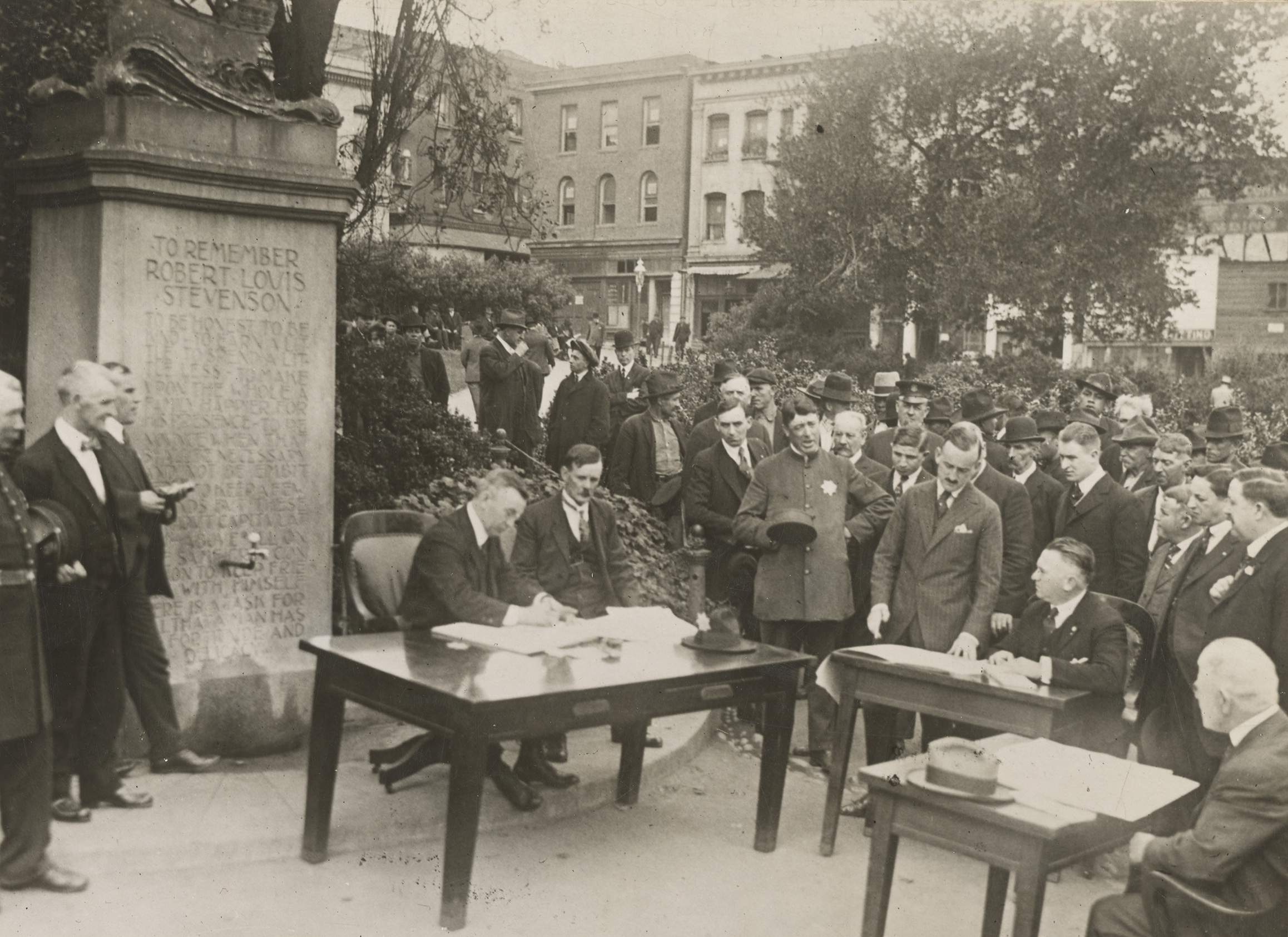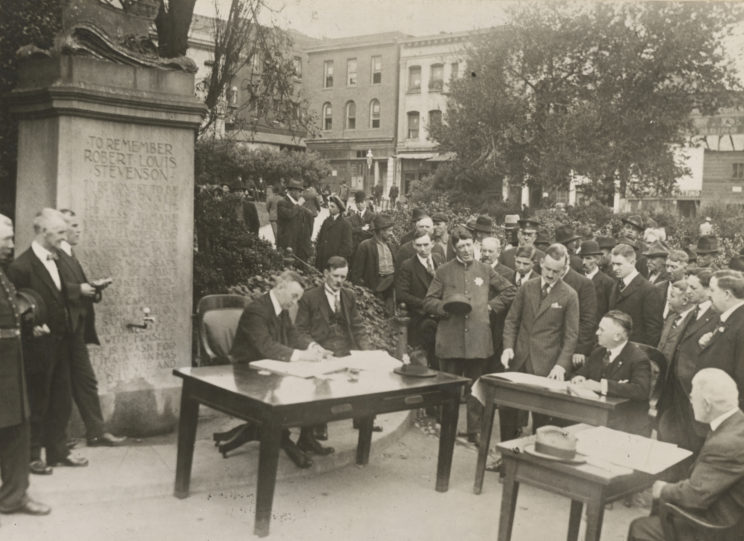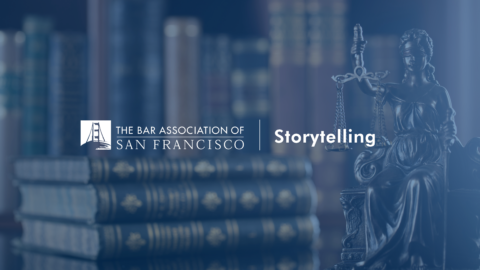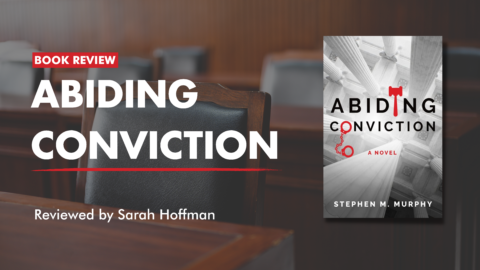Long lines to get through security. Courtrooms and jury assembly rooms reconfigured so people can stay six feet apart. Staggered schedules allowing fewer people to be in the building at the same time. Face masks and hand sanitizer everywhere.
These are just a few of the changes we can expect to become routine as San Francisco Superior Court begins to ramp up after nearly three months of curtailed service. Court officials were forced to postpone all but the most urgent matters and rethink many of their processes and procedures on short notice when the city’s shelter-in-place orders went into effect March 16 to reduce the spread of COVID-19.
As the court began to prepare for the resumption of jury trials, court officials emphasized the need for patience and flexibility.
“Everyone has to realize that the process is not going to be like it was six months ago,” said Presiding Judge Garrett L. Wong. “There are going to be changes. Patience is required.”
Wong and Court Executive Officer T. Michael Yuen emphasized that they would be following the guidance of public health officials and taking all steps possible to protect the health of the public, along with lawyers, judges, and court staff.
In a phone interview during the lockdown, Wong and Yuen said the need to balance access to justice and public health has guided their decision-making process from the start of the crisis.

A Public Health Crisis Emerges
Early in the year, the court began monitoring media reports about a mysterious new respiratory illness sickening people in China. In mid- to late-January, court officials emailed judges and staff, asking them to be vigilant about hand-washing and stay home if they felt sick.
“Back then if you were to tell me just a mere two months from then everything in the world would be shutting down I would have thought there would be no chance,” Yuen said.
As public health warnings began to heighten, Wong and Yuen began drawing up contingency plans in the event of a shutdown. Wong reached for a pamphlet the previous CEO had given him regarding what to do in the event of an isolation or quarantine order. He consulted with the court’s supervising judges in probate, criminal, family, and civil to determine the essential needs. On March 17, about 75 percent of the courtrooms closed, along with clerks’ offices. Drop boxes were placed outside for incoming paperwork, which would be processed by a minimum level of staff.
The goal was to keep as many judges and court staff at home as possible while making sure the public still had access to the courts for urgent matters such as criminal arraignments and civil matters that could not wait. Judges came into the courthouse only when they couldn’t handle hearings remotely. “We didn’t want them to come into the courthouse just for appearance’s sake,” Wong said.
The emergency orders from Chief Justice Tani Cantil-Sakauye and the Judicial Council helped considerably, allowing the courts to declare a sixty-day court holiday for the purposes of meeting filing deadlines, Wong said.
As the weeks went on, Wong and Yuen continued to evaluate the situation and make changes where needed. They communicated the new policies and procedures on the website and through telephone and video outreach. Fifteen hundred people signed up for an April 21 webinar organized by the Bar Association of San Francisco where the judges answered questions about the process and how litigants with urgent matters could request a hearing.
At that time, eleven courts remained open—five at the Hall of Justice, five at the Civic Center, and one at the Juvenile Justice Center. Among the hearings that could not be delayed were criminal arraignments and release hearings, probate court requests for temporary conservatorship, delinquency proceedings, dependency hearings and requests for temporary restraining orders and gun/domestic violence restraining orders.
The Scramble for PPE
One of the biggest challenges was procuring scarce personal protective equipment and cleaning products for the staff. The court worked through the county government to obtain supplies and reimbursed employees for store-bought items, Yuen said.
Yuen said the court was focused on the human side of things. “When dealing with 450 people, how do we protect them and their personal health—not just as individuals but the families they live with? How do we make sure they’re practicing safe habits at work that translate to safety at home as well?” he said.
Wong noted that a number of the judges are older, putting them at higher risk if they contracted the coronavirus. Yet, all stepped up and did their part to make sure the courts handled as much business as possible.
“The judges have all really pitched in. I think it’s an understanding of what they signed up for. It’s a commitment to the administration of justice,” said Wong, who wanted to keep the court business flowing as much as possible to prevent the backlog from growing too large.
The crisis also forced the court to quickly adopt new technology that was previously in the planning stages.
“This accelerated the need to have technology that allows us to communicate with the public and lawyers in a secure and expedient fashion,” Wong said. “In that way, it’s been a good thing. It’s forced everyone to be more collaborative.”
Wong and the other judges who preside over civil courts have also been encouraging litigants to settle cases where possible.
“Everyone recognizes there will be a bottleneck of cases. Everything we can do to chip away will be so much better in the long run,” Wong said.
When Jury Trials Resume
We don’t yet know what the fallout will be. But one thing is almost certain—the court activity that will be the most difficult and unpredictable to resume in the face of the pandemic will be jury trials.
If people are all wearing masks, how will jurors be able to evaluate the credibility of witnesses? Jury instructions will have to be rewritten. How can you incorporate remote testimony without infringing litigants’ rights? How will we make sure court reporters are able to hear what’s being said? Can a jury deliberate while maintaining social distance? How will lawyers have confidential side conversations with their clients?
The Judicial Council is developing statewide guidelines on best practices. Wong said that judges will also be listening to local lawyers for suggestions on how best to proceed.
“We want to make sure the legal community feels like there’s due process here,” Wong said. “It may not be the way it was six months ago but it’s the best we can do. We’re trying to take a positive view of this. We are going to make whatever adjustments we can to make sure we enable justice to take place in our courts.”
As activity begins to increase again, the court’s priorities include criminal cases, along with civil cases where deadlines are looming. But the court officials recognize the need to resume jury trials.
Although few cases get to a jury these days, the specter of the jury trial is what often creates an incentive for cases to settle, noted David Levine, who teaches civil procedure and remedies at UC Hastings College of the Law in San Francisco.
In some ways, the decisions facing the court aren’t that different from those facing schools, he noted, but that doesn’t mean it’s going to be easy.
“How the heck do we pull this off?” Levine asked. “It’s going to look worse than the line at Costco—three hundred people lining up for screening.”
At the same time, the public will be relying on the courts to resolve any number of disputes that will inevitably arise when the economy resurges.
The Impact on Litigation
Because trials will take longer, they will become more expensive—both in terms of the public cost to hold the court proceedings and the private costs borne by the litigants.
“Smart lawyers will use this to say to their clients, ‘This is why we should think of these different kinds of ADR [alternative dispute resolution] devices,” he said.
Courts will face some knotty Constitutional questions as well, Levine said. Will criminal defendants be willing to waive their right to confront witnesses in person (allowing remote testimony)? “I can see defense lawyers going crazy saying if the jury sees my defendant in a mask, they’re going to think he’s guilty.”
Not to mention the complications created by the need to maintain social distancing.
“Think about the defense lawyer whispering to their client. It’s just going to be awkward,” Levine said.
Lawyers will face similar challenges in trying to settle cases through arbitration and mediation.
Remote mediations should work well in concept. But in reality, videoconference is not a true substitute for face-to-face meetings, said Jason Wolford, a San Francisco tenants rights lawyer.
“There are things you do in person that you can’t do on Zoom call. You can’t have a ‘walk and talk’ with a mediator in the same way we’re doing it on Zoom,” he said. “If my client is having a deposition taken and I’m not in the same room I’m not getting all the same visual cues to get the full experience and pick up on things. If I’m taking defendant deposition I can’t see them fidget and pace around the room.”
On the other hand, litigants on both sides will be contending with the same challenges.
“Everyone’s in the same boat. Everyone’s going to have to adjust,” Wolford said. “We’re in a new age here, at least for the foreseeable future.”
Laura Ernde is a San Francisco-based communications consultant. She has covered legal affairs for more than a decade, as a journalist and former editor of the California Bar Journal.



